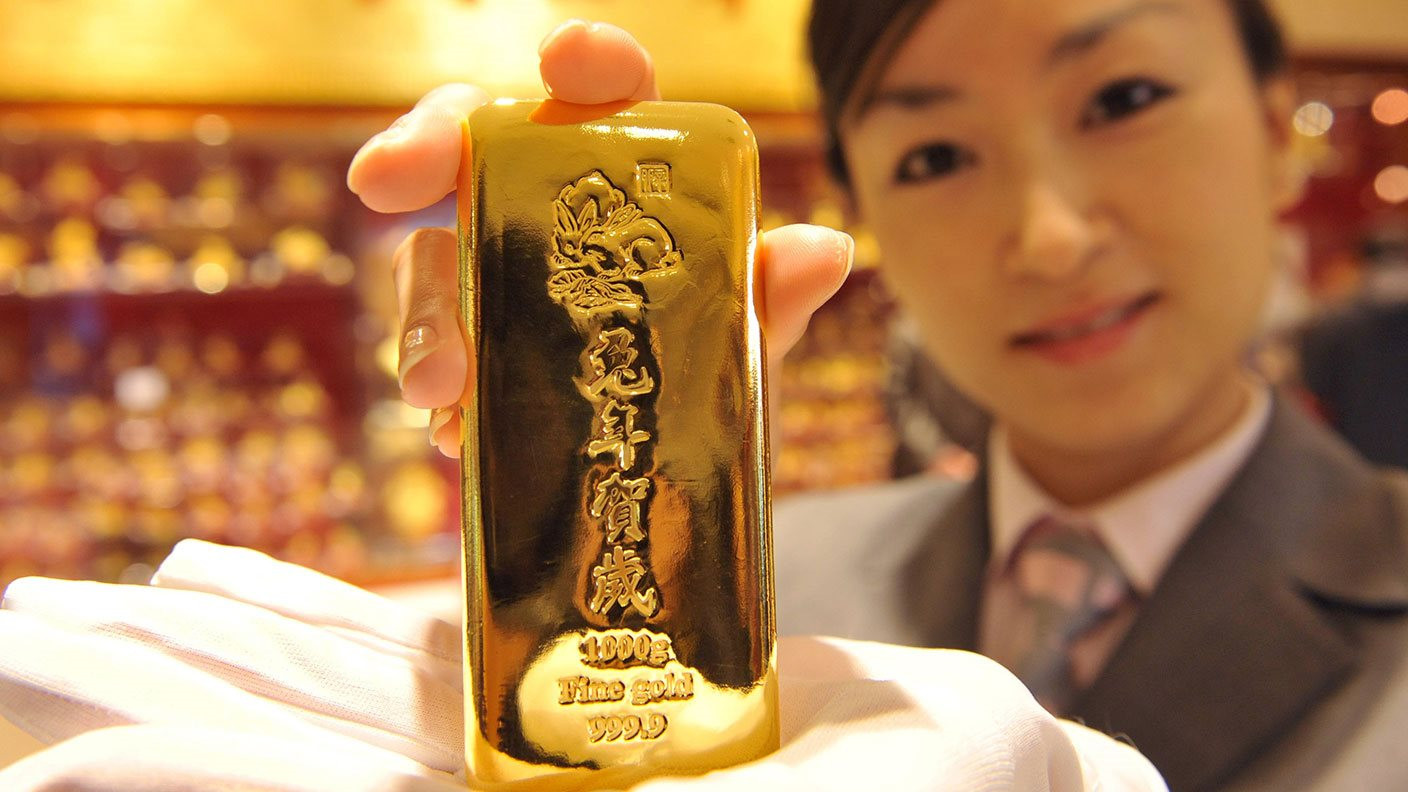Gold Demand in China Spurs Global Interest in Precious Metal

With gold prices reaching record highs of over $2,400 per ounce this year, the global market has been captivated, and China—the world’s largest producer and consumer of the precious metal—has been the epicenter of the extraordinary price surge.
Heightening geopolitical tensions, including the conflicts in the Middle East and Ukraine, and the prospect of lower U.S. interest rates have all fueled gold’s appeal as an investment. But underpinning its rally is the relentless demand from China, as retail buyers, investment funds, futures traders, and even the central bank have embraced bullion as a store of value in times of uncertainty.
China and India have traditionally alternated in claiming the title of the world’s top gold-buying nation. But since 2023, China has seemingly secured its position, with Chinese consumption of gold jewelry, bars, and coins soaring to record levels. Demand for gold jewelry in the country jumped 10% in 2023, while in India it fell by 6%. Meanwhile, Chinese investment in gold coins and bars surged by 28%.
Even more remarkably, there is further room for growth in this market. China’s limited investment options, a protracted crisis in its real estate sector, a volatile stock market, and a weakening yuan have all driven flows into safe-haven assets.
“The amount of money available for these kinds of situations is significant for an asset class like gold, particularly for those who are new to the market,” said Philip Klapwijk, managing director of Hong Kong-based consultancy Precious Metals Insights. “There aren’t many alternatives in China.”

Visitors look at gold ornaments at the Fourth China International Consumer Products Expo in Haikou, the capital of southern China’s Hainan province on April 17, 2024. (Photo: Xinhua)
Despite China being the world’s largest gold miner, it remains a net importer of the metal, and its imports have been climbing. Over the past two years, overseas purchases have totaled more than 2,800 tons—exceeding the amount of gold that has flowed into exchange-traded funds (ETFs) globally, or roughly one-third of the U.S. Federal Reserve’s gold reserves.
Chinese gold imports surged in the run-up to the Lunar New Year, a peak gifting season, with imports in the first two months of 2024 jumping 53% year-on-year. Despite the seasonal high typically passing, the pace of gold imports into China has not abated.
The People’s Bank of China has been a voracious buyer of gold for 17 consecutive months, its longest-ever buying streak, as it seeks to diversify its reserves away from the U.S. dollar and hedge against currency devaluation. It has become the most prolific central bank buyer of gold, with record imports in 2023 and its purchases expected to continue at pace in 2024.
The allure of gold is reflected in China’s insatiable demand, which has remained robust despite record prices and a weakening yuan, which reduces purchasing power for consumers.
Even the flow of gold in and out of ETFs has reversed direction. Since June 2023, mainland Chinese gold ETFs have seen net inflows in almost every single month, according to Bloomberg Intelligence. This contrasts with the significant outflows experienced in gold funds elsewhere in the world. The divergence has again been attributed to the fewer options available to Chinese investors compared to their counterparts overseas, apart from domestic stocks and property.
Gold ETF inflows in China have totaled $1.3 billion this year, compared with $4 billion of outflows from funds abroad.
As a major importer, domestic buyers in China typically pay a premium over the international gold price. This premium widened to $89 per ounce in early April 2024. Dealers in China are now selling gold for $30–$50 per ounce more than the global benchmark, compared to an average premium of $35 in 2023 and a historical average of just $7.
The surge in domestic gold prices has prompted Chinese media to caution investors against chasing the rally, while both the Shanghai Gold Exchange and Shanghai Futures Exchange (SHFE) have raised margin requirements on certain contracts to curb excessive risk-taking. SHFE’s move came after daily trading volumes spiked to a five-year high.
Chinese demand remains strong despite higher prices, and we expect this trend to continue as Chinese investors worry about further local currency depreciation and rising geopolitical tensions, said Joseph Stefans, head of trading at MKS PAMP. China’s yuan has weakened to a five-month low against the U.S. dollar.
“The physical gold demand in China is still very strong,” said Peter Fung, head of dealing at Wing Fung Precious Metals in Hong Kong. “People are still interested and still want to buy some gold as a safe haven, even small investors.”
Ordinarily, stratospheric prices would dampen the ardor for physical gold, but the market is displaying unusual resilience. Chinese consumers typically buy gold on dips, providing a floor for the market during downturns. Not this time, with Chinese demand contributing heavily to prices pushing ever higher.
Source: SCMP






































